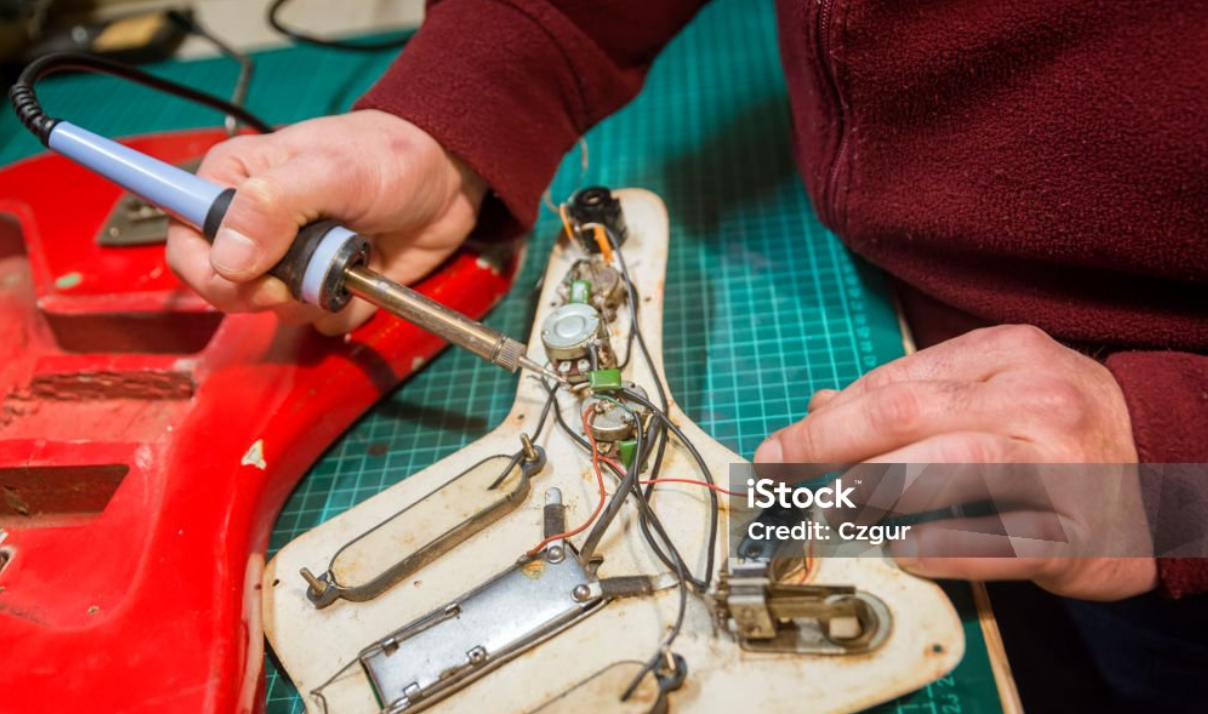
Ever wondered why your guitar’s wiring crackles like a vintage amp? Blame it on a lousy soldering job—or worse, the wrong soldering iron. Whether you’re swapping pickups on your Strat or fixing a busted jack, your guitar deserves better than a generic $20 hardware store iron. Let’s break down how to pick the perfect soldering iron for guitar repairs, mods, and DIY magic—without frying your gear (or your fingers).
Guitar electronics are delicate beasts. Think of your pickups like microphones—they’re sensitive, fussy, and packed with tiny components. A cheap iron designed for plumbing or DIY crafts? It’s like using a sledgehammer to tune a piano. Here’s why:
Heat sensitivity: Guitar pots and PCB boards can’t handle the wild temperature swings of a basic iron.
Precision: Soldering a 22-gauge pickup wire requires surgical accuracy—not a blunt tool.
Safety: Static discharge from poorly grounded irons can zap your pickups’ mojo.
Picture this: You’re soldering a new tone pot, but your iron’s too hot. Suddenly, that sweet PAF pickup smells like burnt plastic. Oops. Cheap irons lack:
Temperature control (bye-bye, insulation).
Anti-static protection (RIP, active pickups).
Ergonomic handles (hello, hand cramps).
Pro Tip: If your solder joints look like melted licorice, it’s time to upgrade.

“But my 60W iron has a dial!” Sure, but wattage only affects how fast your iron heats up—not how stable it stays. Guitar work demands PID-controlled temps (think auto-tune for heat). For example:
600°F: Ideal for thin pickup wires.
750°F: Sweet spot for jack sockets.
850°F: Needed for grounding braids (aka “the heavy metal setting”).
Cranking your iron to max is like slamming the treble knob—it’s harsh and unforgiving. Instead:
Low heat = Clean, crisp joints (like a Fender Twin).
Medium heat = Balanced flow (think Vox AC30).
High heat = Aggressive bonding (Marshall stack mode).
Fun Fact: A digital display is your “tuner” for temperature—no guesswork!

Soldering a Les Paul’s wiring harness takes hours. A comfy grip is like a well-cut guitar strap—it lets you focus on the music, not the pain.
Need a chisel tip for shielding cavities? A conical tip for PCB work? Swap ’em faster than a pedalboard preset.
Bold Claim: The best soldering iron for guitar manufacturers (like us!) offer 10+ tip options.
Static electricity is the silent killer of humbuckers. A grounded iron is like a noise gate—it keeps your tone clean.
LEDs are precise (think metronome), while analog dials are vibe-y (like tube amp warmth). Choose based on your style!
Touring tech? Grab a pencil iron that fits next to your capo. Home tinkerer? A station with all the bells and whistles.
Ventilation: Solder fumes ≠ vintage tone. Use a fan or open a window.
Heat-resistant mat: Save your nitrocellulose finish from accidental burns.
Fire extinguisher: Because nobody wants their Telecaster to become a campfire.
A $15 iron might seem like a steal—until it:
Overheats and melts your tone pot.
Zaps your $200 pickups with static.
Dies mid-project (RIP, weekend plans).
Pro Move: Invest in a reputable soldering iron for guitar from a trusted manufacturer.
Dirty tips = weak joints. After each session:
Wipe the tip on a damp sponge.
Re-tin with fresh solder (like oiling a fretboard).
Store it in a tip holder (no loose rolling!).
If your iron struggles to melt solder, it’s not “vintage”—it’s dead. Swap tips every 6–12 months.
China’s factories offer:
Affordability: High quality without the boutique price tag.
Customization: Need a purple iron to match your PRS? Done.
Bulk orders: Perfect for repair shops and schools.
Buying from Alibaba? Watch out for:
Fake certifications (look for CE/ROHS marks).
No warranty (always ask!).
Hidden shipping costs (compare FOB vs. DDP).
Ready to solder like a pro? Whether you’re a DIY warrior or a seasoned tech, the right soldering iron for guitar turns messy wiring into rock-solid connections. Remember: Your guitar’s tone starts at the solder joint.
PS: Check out our custom soldering stations designed specifically for guitarists—PID control, anti-static tech, and ergonomics that’ll make your Strat jealous.
Contact: Karen
Phone: (0086) 755 2340 8754 ext. 807
E-mail: atetool@atetool.com.cn
Add: 5F, 1-2# Building, Tongfuyu Industrial Zone, Aiqun Rd, Shiyan Subdistrict, Bao'an, Shenzhen, 518108, China